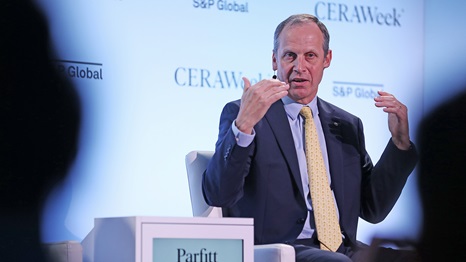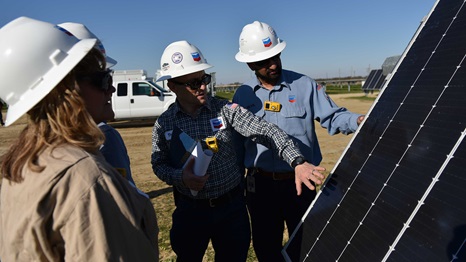alternative fuels
first steps to expanding hydrogen market: small-scale production
2 min read | february 22, 2024
OneH2 mobile hydrogen fueling stations can help bridge the gap between availability and demand for hydrogen to fuel vehicles.
Hydrogen is expected to play a key role in a lower carbon future. But like many developing energy sources, it comes with a chicken-or-the-egg conundrum.
Which comes first—hydrogen fueling stations and infrastructure or the vehicles that rely on hydrogen power?
Chevron is one of the leading investors in a new round of funding for a hydrogen fuel and infrastructure supplier called OneH2 which hopes to answer that question. Together, they’re focusing on creating mobile fueling stations and distributed small-scale supply to meet growing demands for hydrogen. This meets customers where they need fuel and helps OneH2 and its investors scale up for what many hope to be a bright, hydrogen-focused future.
why it matters
Global demand for hydrogen is expected to grow from 95 million tonnes in 2022 to 150 million tonnes in 2030, according to the International Energy Agency (IEA). Much of that growth is expected to play a key role in reducing greenhouse gases in sectors where emissions are hard to abate, including long-distance transport, heavy industry, aviation and shipping.
And yet, lackluster financial incentives and cost pressures could slow that growth. This recent round of funding could begin to plug those gaps and expand the adoption of hydrogen beyond its current uses.
global hydrogen demand, 2022
95
million tonnes
global hydrogen demand expected in 2030
150
million tonnes
“The OneH2 team deeply appreciates the steadfast support from our existing investors as we continue to invest in hydrogen infrastructure across the United States,” said Paul Dawson, OneH2’s president and CEO. “Each of our investors will play a pivotal role in shaping the trajectory of OneH2 and contributing to the advancement of the broader hydrogen industry.”
bridging the gap
OneH2 has mobile fueling trailers that can go where the customer needs them, for instance, to fuel a fleet or satisfy onsite industrial processes. They can also provide contingency fueling when stations go down or run out of hydrogen.
Improving availability can encourage companies to switch to hydrogen fuels as infrastructure scales up to meet rising demand. That can decrease risks associated with building pipes and fueling stations when the demand is low. It can also lessen the gamble of building up demand first when sufficient infrastructure is not available.
michael ruddock
chevron’s hydrogen business development manager
what about price?
OneH2 has the benefit of being a lower-cost hydrogen solution based on proven technology. “Providing it at scale helps bring the cost down,” Ruddock said. “The investment in OneH2 is a lower-capital investment opportunity that provides proof of concept for larger-scale hydrogen investments.”
topics covered
related content
-
 3 things to know about the future of hydrogen
3 things to know about the future of hydrogenemissions solutionsmarch 29, 2024
-
 laying the foundation to realize carbon capture’s potential
laying the foundation to realize carbon capture’s potentialemissions solutionsmarch 27, 2024
-
 global gas markets are changing: what it means
global gas markets are changing: what it meansemissions solutionsmarch 25, 2024
-
 hydrogen facility to be a chevron first
hydrogen facility to be a chevron firstour operationsfebruary 29, 2024
chevron email updates
Subscribe to our newsletter to receive news and updates.



